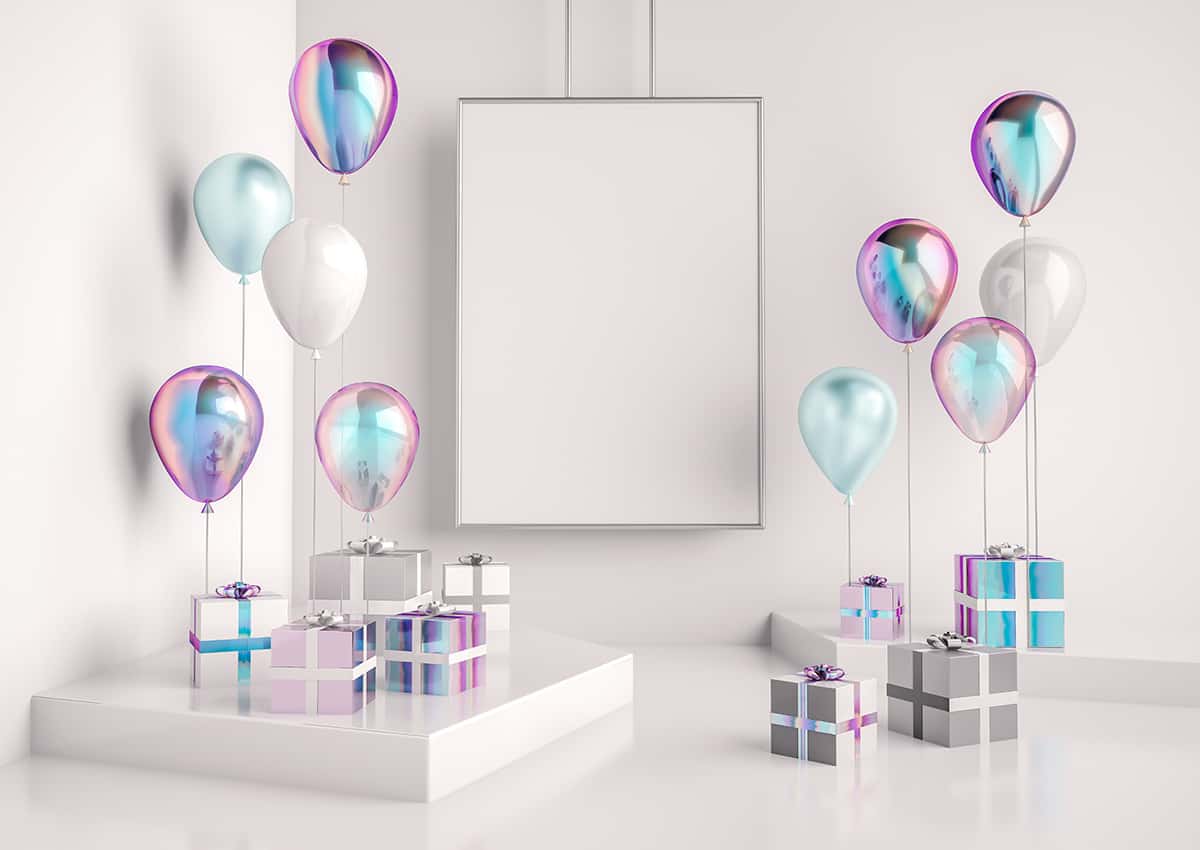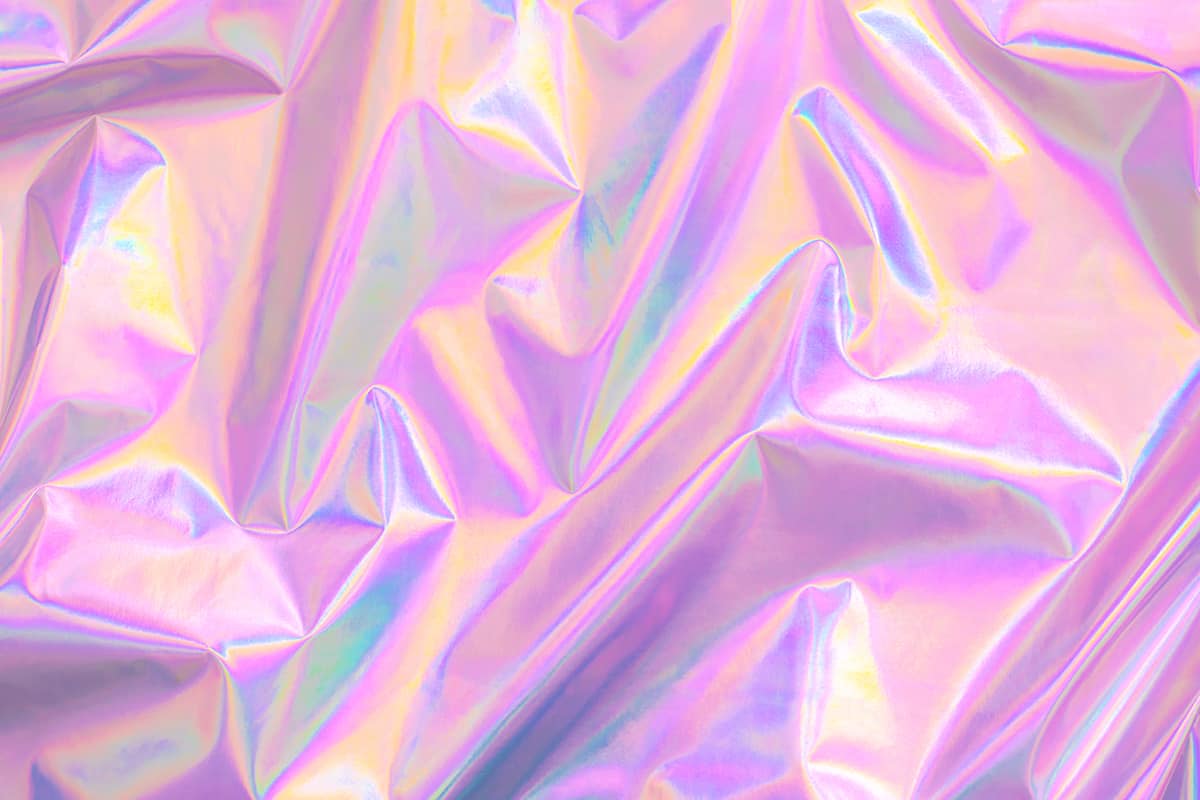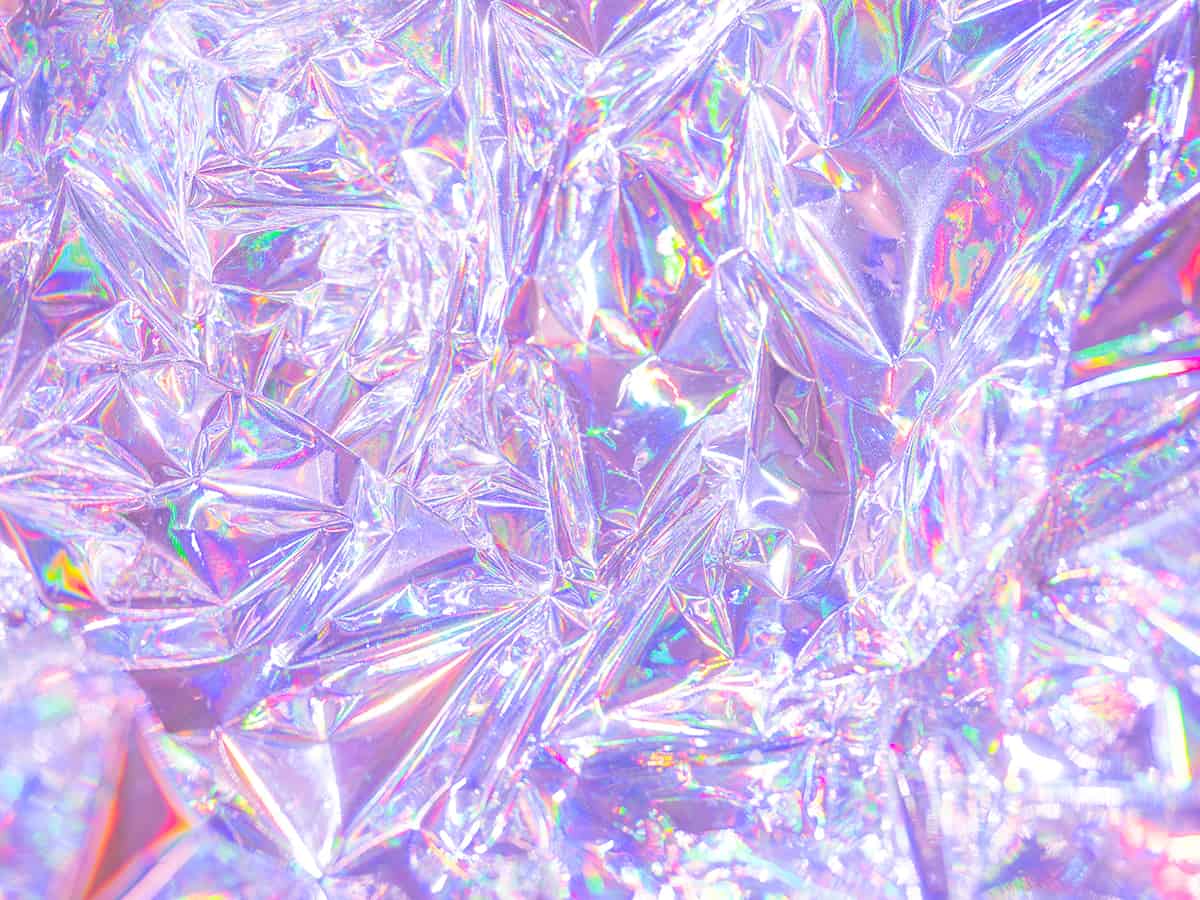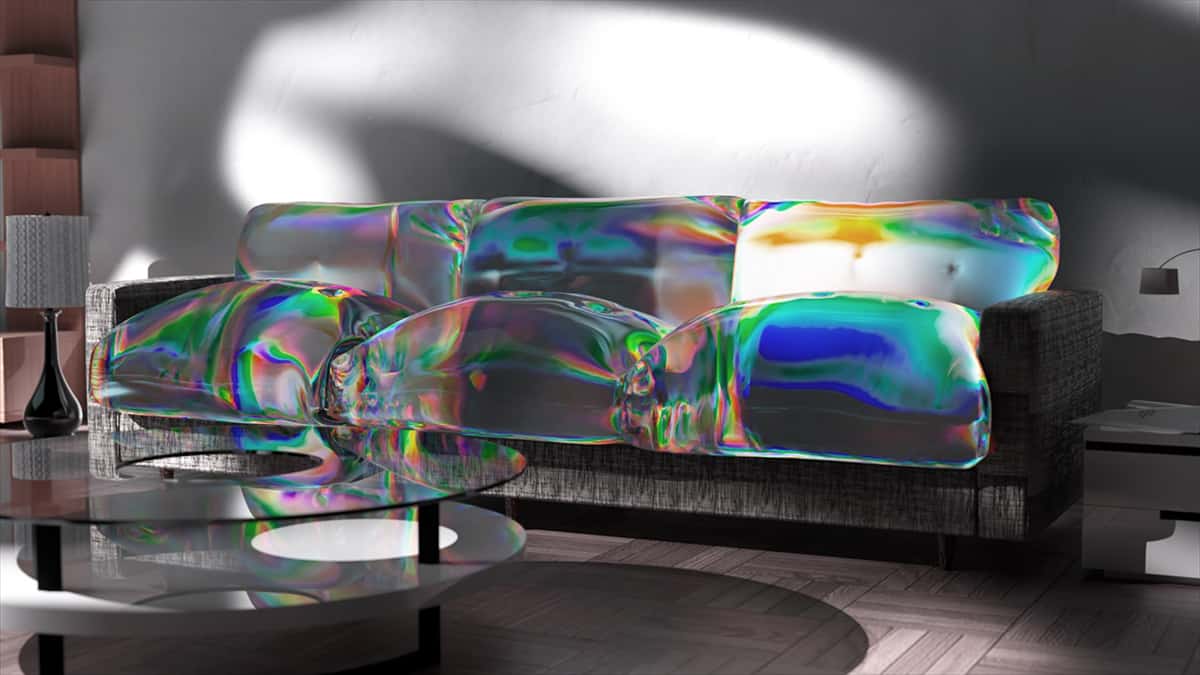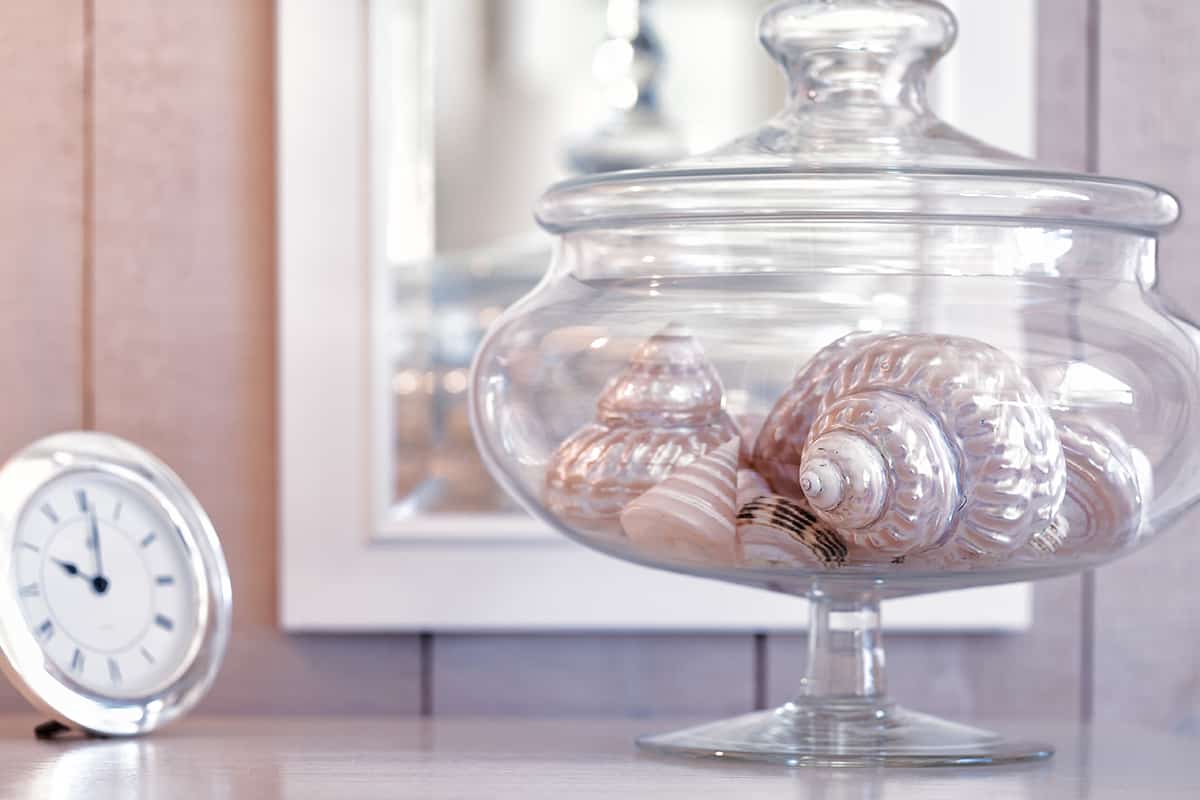Iridescence is an effect that means we see various colors on a single item, depending on the angle we view it from. Though iridescent items appear to be continually changing in color, it is an effect of the way the light hits the items and the way our brains perceive this.
Iridescence can be tricky to come to terms with, but it’s very easy to incorporate into a home decor style.
Here we explore exactly what iridescence is, what color iridescent can be, how to use it in interior design, and what sort of colors to use alongside it.
What Color is Iridescent?
Iridescent is not a single color. Instead, it is a term that refers to the way that some objects seemingly change color depending on the angle you are viewing them or the angle the light hits them at. Common items which are iridescent will appear to be blue-green and change to a pink-purple color when viewed in a different way.
What Items Are Iridescent?
Some objects which are widely known to be iridescent are soap bubbles, opal, and some insect wings, such as dragonflies and butterflies. These seemingly change color depending on the angle we are viewing them at, making them appear to be multiple colors all at once.
Why Do Iridescent Objects Change Color?
Iridescence is a scientific phenomenon that describes the way that some surfaces can seemingly change color. Renusha Indralingam from Yale Scientific explains, “Iridescence occurs when an object’s physical structure causes light waves to combine with one another, a phenomenon known as interference. In constructive interference, light waves combine so that the crests and troughs line up to reinforce each other, increasing the vibrancy of the reflected color.
As the observer’s viewing angle shifts, the colors of the iridescent object change depending on the varying degrees of constructive and destructive interference.” From this, we can see that the object itself is not actually changing color; it’s all about the way our brains perceive light waves and how they interact with each other on certain surfaces.
Iridescent Accents in Home Decor
The iridescent effect can add a really unique and unusual look to a space, and there are a number of ways you can incorporate this effect into your home. From iridescent paints to iridescent wallpapers, soft furnishings, and accessories, you can create a custom style with quirky iridescent effects.
Iridescent wallpaper
If you really want to make an impact, then using an iridescent effect wallpaper will do the trick. A light-colored iridescent wallpaper could be subtle enough to use on all walls in a room, while a brighter or darker iridescent wallpaper might be better used on a feature wall.
Iridescent wallpapers can look flat in some lights, so you’ll want to pay attention to the angle of lighting that will be shining on your wall before you make the commitment to fixing the wallpaper in place.
The nature of iridescent wallpapers means that they can look different colors in different lights, so take this into account when planning the rest of your color scheme. For iridescent walls, neutral accessories and soft furnishings will work best to avoid any clashes of color.
Iridescent soft furnishings
When you think about how to use iridescent accents in home decor, soft fabrics probably aren’t what springs to mind. However, there is a range of fabrics available that have iridescent effects, namely shiny textured fabrics such as satin and silk. You can also find plastic-coated fabrics which have iridescent effects, and these are useful for creating waterproof surfaces such as child-friendly tablecloths.
If you’re interested in adding iridescent features to your home, then soft furnishings is a good route to take because these can easily be swapped out if you get tired of the iridescent trend.
For example, add some iridescent satin cushions to a sofa and simply replace these with some regular cushions if you want to change the color scheme at a later date. Iridescent bed sheets can make a nice sultry addition to a bedroom, or consider iridescent drapes at the window for a high-end elegant look.
Iridescent paint
Iridescent paint is most common in the automotive industry, where it is used to spray vehicles to achieve an iridescent effect. However, you can also get iridescent paints for use in the home, and these can be really useful for adding an iridescent theme to your interiors on a budget.
With the use of iridescent paint, you can completely transform the look of some old home accessories and give them a new lease of life while creating a cohesive theme of iridescence.
For example, select a few items in the home that you’re no longer particularly fond of, for example, a vase, some photo frames, and the base of a lamp. Take these to a suitable workspace, such as a garage, a shed, or a workshop, and spray them with iridescent spray paint.
Follow the manufacturer’s instructions, which usually recommend several thin coats of spray paint, and then allow them to completely harden before bringing them back into the home. Then you can position them in various spots around a room to bring together an iridescent theme on a super small budget.
Another thing you could do with iridescent paint is to upcycle furniture. Any furniture with a hard surface can be coated in iridescent paint, such as a wooden dining chair, a metal side table, or a plastic bar stool. Iridescent furniture will make for a bolder feature in a room since they typically occupy more space, and they will likely use several cans of spray paint, which could increase your expenditure.
However, the resulting look can be very effective, and if you move on from the iridescent trend in a few years, you can just paint right over it in another color.
Iridescent furniture
Iridescent furniture generally comes in the form of tables with a glass or metal surface. These types of pieces will be much harder to come by compared with furniture in regular colors, and this ordinarily means that the price will be far beyond your typical furniture.
Iridescent furniture can add a really glamorous edge to an interior decor theme, especially if you like your home style to stand out from the crowd.
Iridescent accessories
Accessories in an iridescent finish are widely available, ranging everywhere from iridescent light fittings to iridescent soap dispensers. If this is a trend you want to get behind, you shouldn’t find it too difficult to source a number of iridescent pieces to accessorize your home.
Match iridescent pieces together to create cohesion in a space; for example, choose dark iridescent accessories and continue this look across a whole room with a dark iridescent vase, a dark iridescent candle holder, and a dark iridescent photo frame.
Iridescent features
If you want to add an iridescent look to your home, you can do this with upgrades to the actual fabric of your property. One of the most popular ways to do this is with tiles. In a kitchen, opt for iridescent tiles to use as a backsplash, or choose iridescent wall tiles in a shower room for a sleek and quirky look.
Iridescent countertops are another example of a building material that you can use to upgrade your home, and these can be used in both kitchens and bathrooms. Iridescent glass sinks can be a nice update to a bathroom if you’re looking for a unique style, or choose iridescent glass mirrors on your closet doors to bring a striking effect to the bedroom or dressing room.
What Color Does Iridescent Go With?
Iridescent is not a color itself, but instead, it is an effect. This is the effect of a seemingly color-changing surface. An iridescent object can often be defined as light iridescent or dark iridescent. Light iridescent will have an almost pearlized effect, appearing light blue, pink, or silver in different lights.
Dark iridescent objects in various lighting will appear like oil slicks, with metallic black, dark pink, turquoise, and dark green. The type of iridescent effect you have will determine the best colors to use with it.
For light iridescent, pair these with pale neutral colors. For example, in a bathroom with light iridescent mosaic tiles, choose beige floor tiles, beige wall paint, white cabinets, and white towels and bath mats.
For dark iridescent colors, dark neutrals will look best. For example, in a room with a dark iridescent wallpaper feature on one wall, paint the remaining walls in charcoal and accessorize with navy blue sofas and navy blue curtains.
Since the effect of iridescence can be quite loud and stimulating, it’s always best to avoid using bright colors in the same space with these types of effects. A neutral color palette will allow iridescent surfaces to shine and take center stage while also ensuring the overall experience is not overwhelming.
